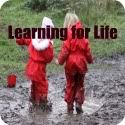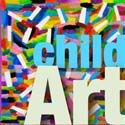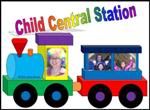With over 20 years of teaching experience, I have heard many a frazzled colleague remark, “I just can’t warm to this/that child!” A troublesome and confronting confession to make for someone who has dedicated their working life to the welfare of children! But, the reality is, we ALL have these moments. It is how we acknowledge and handle such thoughts, that is of greatest importance.
Generally my response to such a declaration goes something along these lines, “This child presents as your challenge, let him help you become a better teacher’. Now, unfortunately I can’t lay claim to such thought provoking words, they actually come from a beautiful poem I stumbled upon several years ago, written by Cathy C. Abraham, “The Gift of a Memorable Child”.
THE GIFT OF A MEMORABLE CHILD
Cathy C. Abraham
The child that is my challenge is a gift
Only he can give me
The gifts of patience, tolerance and acceptance
If I let him
He will be the one to make me into a true teacher
And challenge my very soul
I can learn more from this child
Than from much of my college coursework
If I choose to
A child is not something that is ‘broken’
For me to ‘fix’
This child comes to me a unique individual
Worthy of love
Just as he is
Will I choose to rise to the occasion?
Or be yet another to throw my hands up?
Do I have it in me to maybe be the one
That can make a difference?
Is he maybe the one
That will make a difference in me?
Will I choose to let him?
Beautiful isn’t it? It certainly made a profound impression on me when I first read it.
The children that challenge us, are probably THE children that need our love, guidance and support most of all. It is up to us as the educator, to work hard at building a positive relationship with such children. Our end goal should always be, to facilitate their personal navigation towards a path that brings about acceptance, success and fulfillment.
In my own experience, I have found the following tips to be very helpful:
5 TIPS I USE TO HELP MEET THE CHALLENGE:
- Spend time interacting with the child – I think this is really a ‘no-brainer’! You can’t build a bond with someone without investing some time and effort into the relationship. Sometimes however, teachers can avoid interacting with the challenging child because it is ‘all too hard’. Unfortunately, that often results in the only interaction with the child occurring when the teacher has no option but to step in to resolve an issue. Clearly this has the potential to result in interactions that are ‘negative’ more often than not. Make time to become involved in enjoyable, ‘positive’ pursuits with the child. Try to find moments to have fun and laugh together.
- Get to know about the child’s life and experiences – Talk to the child’s parents and extended family. Get to know about life at home. Learn about the child’s interests, likes and dislikes. Find out about sleeping habits, eating habits etc. Be careful however, don’t make it sound like an interrogation! Diplomacy works wonders. Don’t line the family up with a list of questions, it is amazing just how much information you can glean from a pleasant conversation. And remember, it is always best to be a good ‘listener’.
- Look for the source of the challenging behavior – If you have followed through on the first two tips here, and reflected upon what you have learnt, you are probably well on your way to finding an answer (or two)! There are a multitude of possible triggers/sources of troubling behavior, but once you have an idea, you have something to work with. There is no point working on the behavior alone, it is likely that it will continue to occur if the source/trigger is not addressed. You may not be able to achieve this on your own, sometimes allied professional help may be required.
- Dislike the behavior but don’t dislike the child – So important! A single, or series of behaviors, displayed by a child, DO NOT ‘define’ the child. That is, they do not represent the ‘sum’ of who that child is. In the preschool environment, we must EXPECT to see some behavior that we might deem to be socially unacceptable. At the age of 4 or 5 we cannot begin to assume that children have developed a knowledge of what ‘pro-social’ behavior is, let alone to have developed the ‘conscience’ to act upon it. These are skills that need to be developed in much the same way as cognitive skills are developed… through play, interaction, investigation, experimentation, observation, and most importantly, through ‘adult modelling’.
- Search for that ‘unique quality’ that will ignite the candle of warmth – Again, if you have followed through on the four steps outlined above, you have probably already begun to develop feelings of ‘warmth’ towards this little being that has been your challenge. For me, I often experience a bond develop between myself and a challenging child when I feel that I may have discovered the ‘source’ of the troubling behavior. I think this is when I switch emphasis in rolls from ‘researcher’ to ‘nurturer’. From predominately searching for an answer, to setting in motion the steps to work towards resolving, or at least reducing, the impact the source has on the child’s behavior.











































